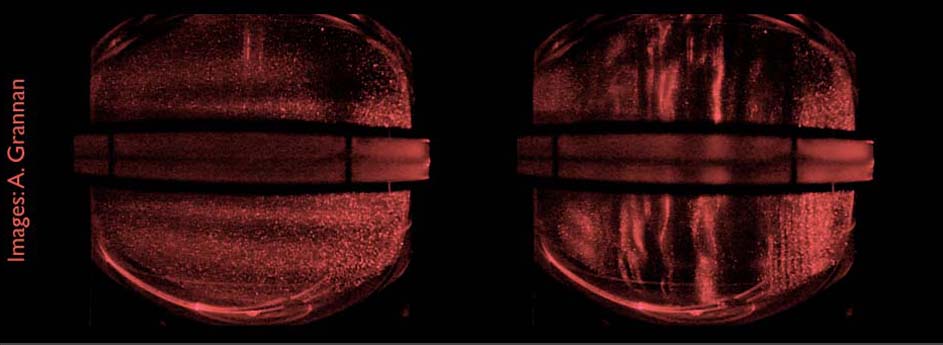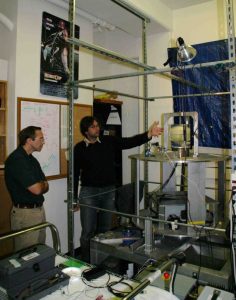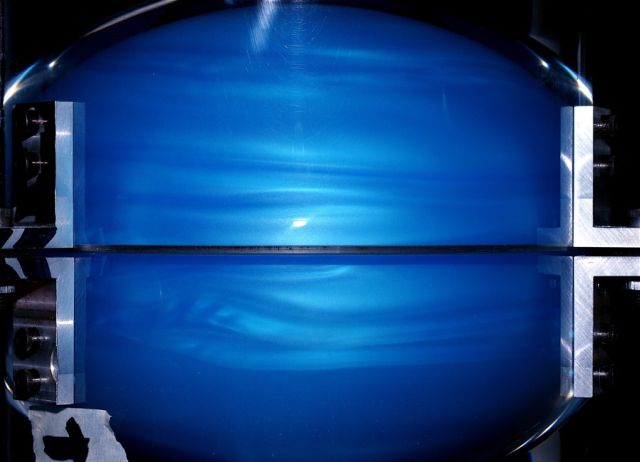
Significant scientific resources are presently being devoted to the study of planetary bodies that undergo librational motions. Yet no comprehensive studies to date have investigated how libration, the oscillatory motion of a planet around its rotation axis, affects interior planetary fluid dynamics. To begin looking at the effects of libration, Jerome Noir is carrying out experimental and numerical simulations (in collaboration with Johannes Wicht of the Max Plank Institute) of librationally-driven core flow. Our goals are to produce detailed models of libration driven flows within planetary cores and briny subsurface oceans. Understanding these flows should enable us to predict mechanical coupling coefficients and induced planetary magnetic fields. Thereby, we hope to develop an essential tool for inferring interior planetary structure and dynamics using observations of planetary librations and magnetic fields. Such a tool will prove relevant to a number of planetary bodies including Mercury, Europa, Io, Callisto, Ganymede and the Earth’s Moon. In particular, this approach will have immediate application, as detailed models of Mercury’s libration-driven core flow will help interpret libration and magnetic field measurements provided by NASA’s MESSENGER Spacecraft.
Funding for this project provided by NASA’s PG&G Program.


